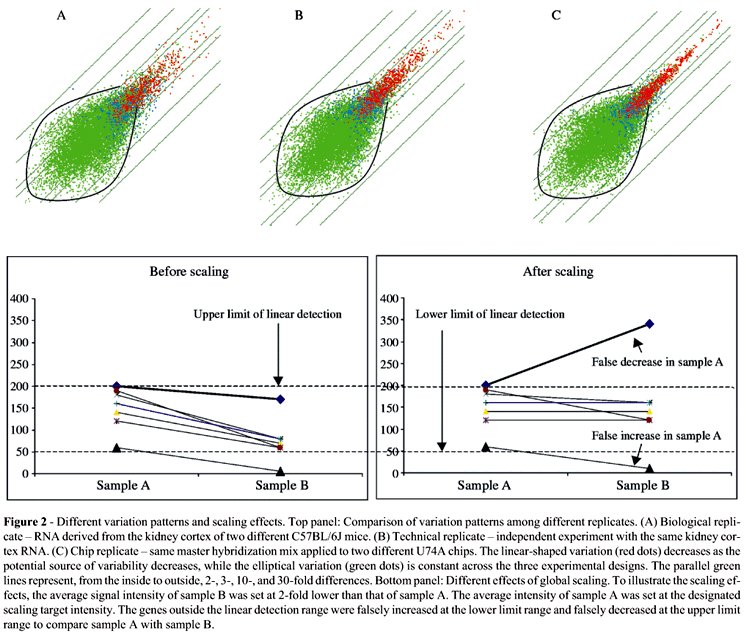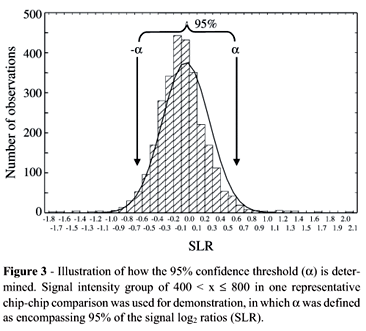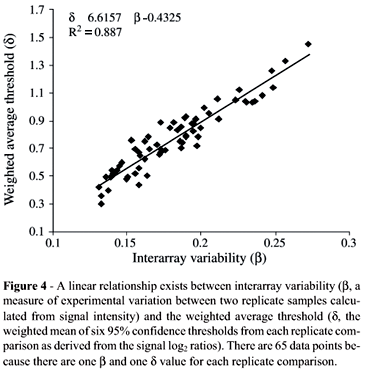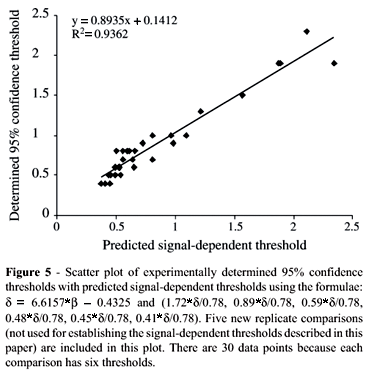The use of a constant fold-change to determine significant changes in gene expression has been widely accepted for its intuition and ease of use in microarray data analysis, but this concept has been increasingly criticized because it does not reflect signal intensity and can result in a substantial number of false positives and false negatives. To resolve this dilemma, we have analyzed 65 replicate Affymetrix chip-chip comparisons and determined a series of user adjustable signal-dependent thresholds which do not require replicates and offer a 95% confidence interval. Quantitative RT-PCR shows that such thresholds significantly improve the power to discriminate biological changes in mRNA from noise and reduce false calls compared to the traditional two-fold threshold. The user-friendly nature of this approach means that it can be easily applied by any user of microarray analysis, even those without any specialized knowledge of computational techniques or statistics. Noise is a function of signal intensity not only for Affymetrix data but also for cDNA array data, analysis of which may also be benefited by our methodology.
microarray; signal threshold; affymetrix; data analysis










